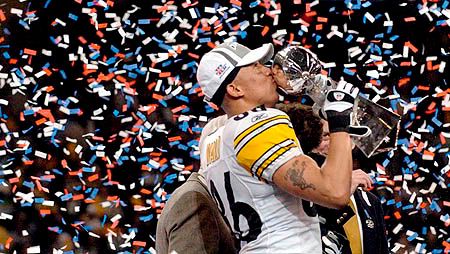Dirty promises
While their popularity in Australia was growing at a faster rate than the band could have anticipated, AC/DC's attempts to achieve international recognition had thus far failed to bear fruit. But if the band was to make a significant long-term impression on overseas markets, it would need the support of a powerful record company with the experience and marketing clout to match the band's ambition. Michael Browning found that support in the London office of the US-based Atlantic Records. So, in the Spring of 1976, AC/DC signed a worldwide deal with Atlantic Records. They decided to relocate to the UK to further their career. They landed in Britain on April 1, 1976.
Meanwhile, AC/DC had recorded their third album in January 1976 in Australia. The first single taken from the album was 'Jailbreak' on the A-side and 'Fling Thing', a traditional Scottish folk song arranged by the Young brothers, on the B-side. The album itself came out in Australia in September and was titled 'Dirty Deeds Done Dirt Cheap'.
When they arrived in the UK, the Punk was sweeping the nation. AC/DC made their first live performances in the UK during April 1976 at the Red Cow pub in Hammersmith, West London, followed by other dates at small clubs across Britain. Before touring on a large scale, AC/DC made other debut appearances, opening for the Back Street Crawlers. The tour was a great success for AC/DC.
At the end of the tour, on May 14, Atlantic's British division issued 'High Voltage' in the UK. The British 'High Voltage' is a compilation of tracks from their first two Australian albums. All of Side One is taken from the 'T.N.T.' album, Side Two takes 'T.N.T.', 'Can I Sit Next To You Girl' and 'High Voltage' from 'T.N.T.', plus 'Little Lover' and 'She's Got Balls' from the Australian 'High Voltage' album.
With this first album now officially on the British market, a tour of twenty venues around Britain was set up, dubbed 'Lock Up Your Daughters'. AC/DC's fifty-minute live set was part of a program featuring a live DJ and film clips of other bands. The tour was a success even if some venues ran into low-attendance problems.
In July 1976, AC/DC got a weekly Monday residency at the Marquee Club in London. The gigs eventually attracted more than 1,000 people at a time while the official capacity of the club was not more than 700. The Marquee gigs firmly established AC/DC as virtually the only non-Punk band doing anything exciting in London in 1976.
This Marquee residency led to an offer to support Ritchie Blackmore's Rainbow in Europe during August for a nineteen-date tour. It was preceded by three headlining gigs in Germany, where 'High Voltage' had sold 16,000 copies in its first week of release.
On August 29, AC/DC played their biggest show at England's Reading Rock Festival, in front of a crowd numbering fifty thousand. Unfortunately, AC/DC's set was something of a misfire, apparently due more to an unenthusiastic crowd than a substandard performance.
In December 1976, 'Dirty Deeds Done Dirt Cheap' was released in Britain. The British version of the album did not contain 'Jailbreak' and 'R.I.P. (Rock in Peace)'. They were replaced by 'Rocker' (from the 'T.N.T.' album) and the previously unreleased 'Love At First Feel' that the band would release as a single in Australia in January 1977.
In December, the band flew back to Australia. The Australian tour, which marked AC/DC's return home after an eight-month absence, saw the group welcomed as conquering heroes. After the tour, the band took a short break around Christmas. They remained in Australia during the first two months of 1977 to record their fourth album 'Let There Be Rock' at Albert Studios in Sydney.
After a few more gigs in Sydney, Melbourne and Adelaide, AC/DC returned to the UK in February 1977 to begin a 26-date tour around the country from February 18 to March 1. The tour was immediately followed by a second European tour supporting Black Sabbath. AC/DC was widely reported to be blowing the headliners off the stage every night. Unfortunately, an altercation occurred between bassist Geezer Butler and Malcolm Young. AC/DC were kicked off the tour and returned to London.
At the end of June 1977, AC/DC and Mark Evans parted company. Within 24 hours of Evans telling the band that he was off, the name of Cliff Williams came to the fore. Michael Browning had heard about him from a mutual acquaintance, and immediately made contact. Cliff Williams walked into his audition and got the job.
The USA
The next step in AC/DC's conquest of the world was the conquest of the United States. Meanwhile, the British version of 'High Voltage' had been released in America during October 1976. 'Let There Be Rock' was to be released in the US in June, four months before Europe and three months after Australia.
AC/DC's first US tour started in the Southern part of the country during the Summer and ended in the Winter, taking them from Texas to Florida. In Florida, they played their first major US gig in front of 13,000 people at the outdoor Hollywood Spartatorium.
AC/DC's first trek across the States was a case of small clubs at one end and huge arenas, opening for REO Speedwagon, in the other. The US tour reached a peak at the Palladium and the CBGB's club in New York. At New York's Palladium, Angus used a cordless guitar for the first time.
On October 14, 'Let There Be Rock', recorded in January/February 1977, finally saw the light in Britain after lengthy delays. In November, the album reached No. 17 in the British charts. The US tour was broken in the Fall by a third tour of Europe and Britain in order to promote their new album. As expected, this time they toured Europe as headliners.
In November/December 1977, back in the States, AC/DC opened for Rush and Kiss. In New York, the band performed a show for radio broadcast at Atlantic's own recording studios on Broadway, on December 7. The set was sent out to radio DJ's as a 'For Promotional Use Only' LP titled 'Live From The Atlantic Studios'. These days very few copies of that limited edition record exist, but it has been released as different bootleg albums since then.
Riff raff
After the traditional New Year break in Sydney, AC/DC returned to Albert Studios with Harry Vanda and George Young to record their next album between February and March 1978. The album called 'Powerage' was released in the UK on April 28. A month later it reached No. 26 in the British charts.
The Powerage World Tour began on April 26 with 28 major venues in Britain. The UK tour finished on May 29 and AC/DC took flight for the United States once more for support slots with Rainbow, Savoy Brown, Alice Cooper, Journey, Aerosmith, Scorpions and UFO.
The band played nearly 100 shows during this period in the States, ranging from small clubs to an appearance at the prestigious Day On The Green outdoor festival in San Francisco during August. AC/DC's reputation was growing considerably in the States. By the end of the US tour, 'Powerage' had sold a quarter of a million copies in America.
The design of the Powerage tour brochure prefigured the cover for the band's long awaited live album. 'If You Want Blood You've Got It' was recorded during the earlier months of 1978 and released at the end of the US tour in October, a mere six months after the release of 'Powerage'. The album reached No. 13 in the UK charts and breached the US Top 50 for the first time. A maxi-single, available on both seven-inch and 12-inch format, was issued by Atlantic shortly after the album. It combined live rendition's of 'Whole Lotta Rosie' and 'Hell Ain't A Bad Place To Be'.
AC/DC promoted the live album by heading straight out on tour in the UK during early November for a series of 16 dates in just 18 days. Extra nights were slotted in everywhere along the way, as the band literally exploded in popularity.

 Stumble It!
Stumble It!













No comments:
Post a Comment